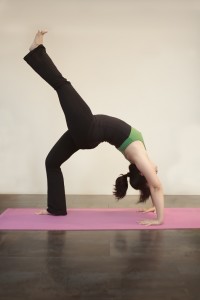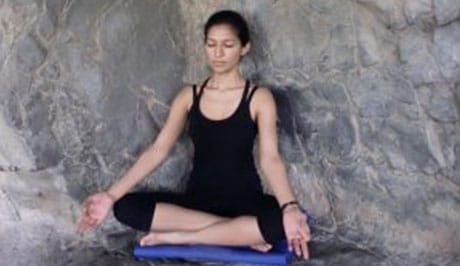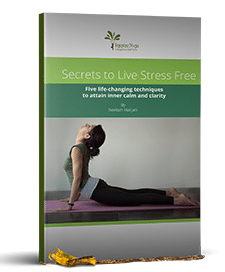
Many of us want to be more flexibile but pushing too much and too soon can be dangerous. Here are 5 tips on how to practice deep stretching in a safe and controlled manner. Here we explain what it means to respect and listen to your body to ensure your yoga practise does not cause any damage or excessive stretching.
- Pain in the best indicator of something going wrong
This is a primal mechanism that we should not ignore. We know the difference between a gentle pull on the back of our legs during our first forward bend and the pain from a pulled ligament when we are prematurely forcing our head to our knees in a forward bend. If you feel any sharp pain- STOP! Slowly come out of the pose and alert your teacher.
- Stay in control
Be sure to maintain the pose and be able to slowly move into another pose. Don’t jerk from one pose to another, even if you are flowing with your breath be sure your muscles are engaged at all times and are controlling the movement- don’t let momentum swing you in and out of a posture. Most cases of injury during a yoga class happen during the transitions into postures rather than holding the posture.
- Locate the discomfort
If you are feeling uncomfortable in the pose, try to find out why and where this is stemming from. Is from a tight muscle or from the centre of a joint? In you are in a forward bend and your hamstrings are tight it is helpful to slightly bend your knees. If you are in a lateral stretch make sure your feet are hip distance apart to ensure you take the pressure off your lower back. If the pain is coming from an injury prone area such as your hips, ankles, knees, shoulders and spinal column gently come out of the pose and if you wish we go back into the pose use a block to take the weight off the sensitive area.
- Check your alignment
There is often an uneven distribution of weight that causes our joints to feel strain. Check the base of your pose, for example, your hands and feet in downward facing dog, making sure your base is firm the arms and legs are active to ensure that no excessive pressure is held around your wrists and your ankles. Follow the exact form of the posture- if you are unsure about the alignment feel free to ask, the clarification will probably benefit others in the class too!
- Notice your breath
If we feel a sudden sharp pain our bodies has a natural reflex of coming into a panic mode. In this high stress situation we either hold our breath or begin panting. It is essential to always check your breathing pattern. We should exhale as we deepen the stretch causing us to relax into the pose. By holding our breath our muscles tense up putting a lot of pressure on tendons and ligaments.
I hope by this we can enjoy all the benefits from our sessions of yoga knowing that the workout is in our hands and we have the tools to eradicate any sources of injury. Stay safe and stay healthy!

